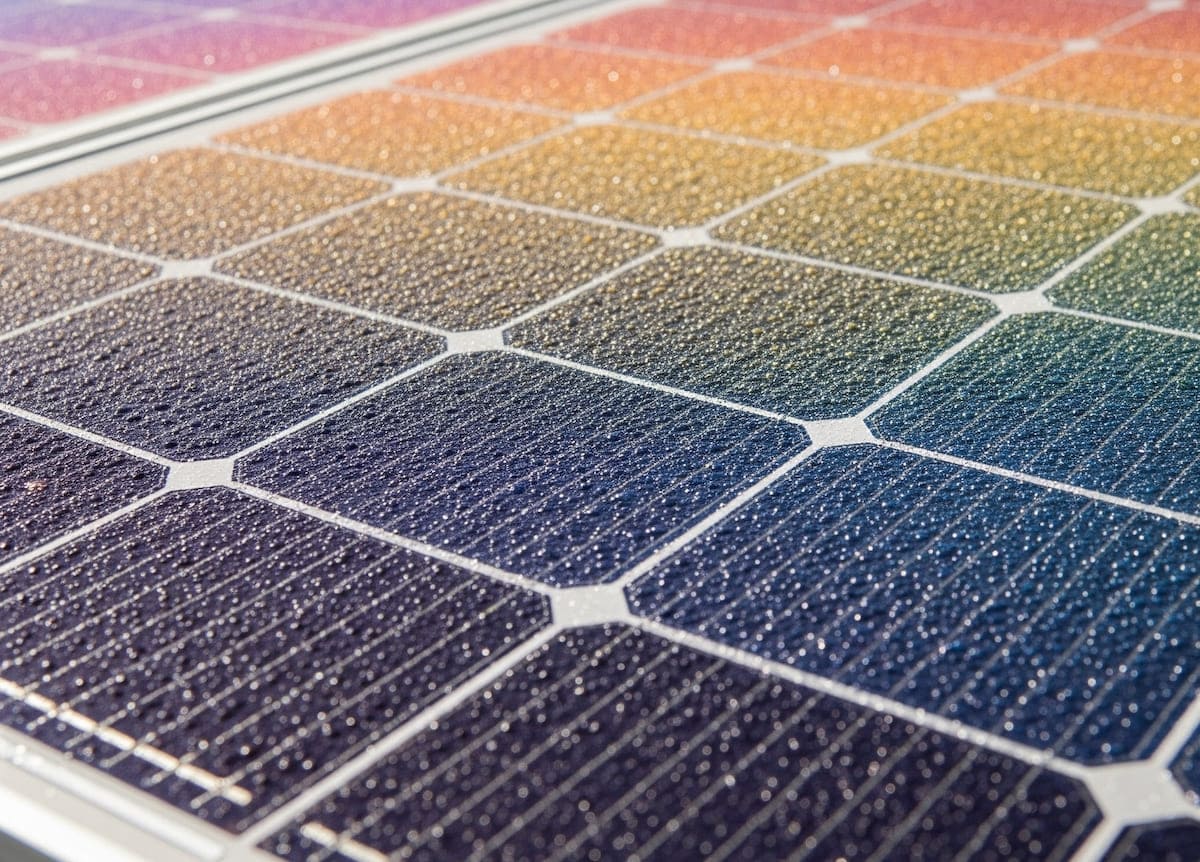
How to cool solar panels efficiently and affordably
An international research team has developed a new material for passive solar panel cooling. Led by the King Abdullah University of Science and Technology (KAUST), the study introduces an innovative hygroscopic composite that is both low-cost and easy to manufacture. It enhances evaporative cooling, one of the most promising strategies in solar energy management.
Tested under the harsh sun of the desert, the new material lowered the average panel temperature by 9.4 °C and increased power output by 10.2%.
The impact of heat on solar panels
Preventing overheating is essential to maximizing photovoltaic performance. In general, crystalline silicon modules, which dominate the current market, convert about 20% of absorbed solar energy into electricity. The rest becomes heat, raising the panel’s temperature above ambient levels.
Precise limits exist for optimal performance. For each degree Celsius above 25 °C, solar panels lose approximately 0.35% efficiency. With newer perovskite-based technologies, which are more sensitive to temperature, thermal degradation poses an even greater challenge.
Why does this happen? Because thermal energy affects the maximum output power and the open-circuit voltage, which decrease with heat, while the short-circuit current generally increases.
In short, in hot and sunny climates, where solar technologies should perform best, ambient conditions can actually become a liability. Keeping solar panels cool can significantly increase electricity production and shorten the return on investment.
How to cool solar panels
Over the years, various strategies have emerged to reduce thermal stress on solar modules, either through active or passive cooling methods.
Active cooling uses powered systems, such as circulating water or air, to remove heat. While effective, this is currently the most expensive and maintenance-intensive solution.
Passive cooling, on the other hand, relies on natural processes for heat dissipation. It is easier to implement and requires minimal maintenance. Passive methods include natural ventilation, radiative cooling, and evaporative cooling.
Evaporative cooling is attracting growing attention thanks to the development of hydrogel-based composites with outstanding hygroscopic properties. These materials can absorb and release water in response to ambient humidity and temperature changes, enabling surface cooling through evaporation. Their main drawback is high production cost due to the complexity of manufacturing.
This is where KAUST’s new research makes a difference.
A new passive cooling layer for solar panels
To improve passive cooling, the research team created a hygroscopic composite made from lithium chloride and sodium polyacrylate. This material absorbs moisture from the air at night and releases it during the day. The key advantage? Sodium polyacrylate is a low-cost polymer that can be produced without harsh chemicals or specialized reagents, unlike many other hygroscopic materials.
The team used the composite to build a 10 mm-thick evaporative cooling layer, applied to the back of PV modules.
Field-tested in the Saudi desert, the composite-cooled panels reached temperatures 9.4 °C lower than standard panels. They also delivered over 12% more power and had a lifespan more than 200% longer, while cutting electricity production costs (LCOE) by nearly 20%.
Beyond Saudi Arabia, the panels were also tested in colder U.S. regions under rainy conditions, demonstrating that the passive cooling system works across diverse environments.
These findings pave the way for more efficient and sustainable solar power, as detailed in the article “Streamlined fabrication of an inexpensive hygroscopic composite for low maintenance evaporative cooling of solar panels” in Materials Science and Engineering: R: Reports.